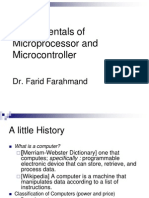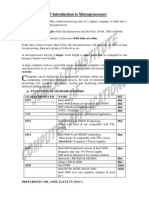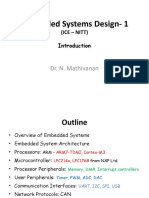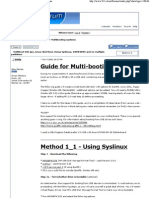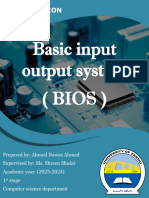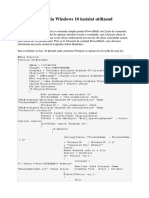0% found this document useful (0 votes)
12 views6 pagesMicroprocessor Chapter 1
Chapter 1 provides an introduction to microprocessors, detailing their functions, architecture, and historical evolution. It covers key features, performance metrics, and applications, as well as the general architecture of microcomputer systems and Intel's microprocessor generations. Additionally, it discusses architectural compatibility, hardware and software interactions, and basic number systems used in digital systems.
Uploaded by
tadele gudetaCopyright
© © All Rights Reserved
We take content rights seriously. If you suspect this is your content, claim it here.
Available Formats
Download as PDF, TXT or read online on Scribd
0% found this document useful (0 votes)
12 views6 pagesMicroprocessor Chapter 1
Chapter 1 provides an introduction to microprocessors, detailing their functions, architecture, and historical evolution. It covers key features, performance metrics, and applications, as well as the general architecture of microcomputer systems and Intel's microprocessor generations. Additionally, it discusses architectural compatibility, hardware and software interactions, and basic number systems used in digital systems.
Uploaded by
tadele gudetaCopyright
© © All Rights Reserved
We take content rights seriously. If you suspect this is your content, claim it here.
Available Formats
Download as PDF, TXT or read online on Scribd
/ 6














